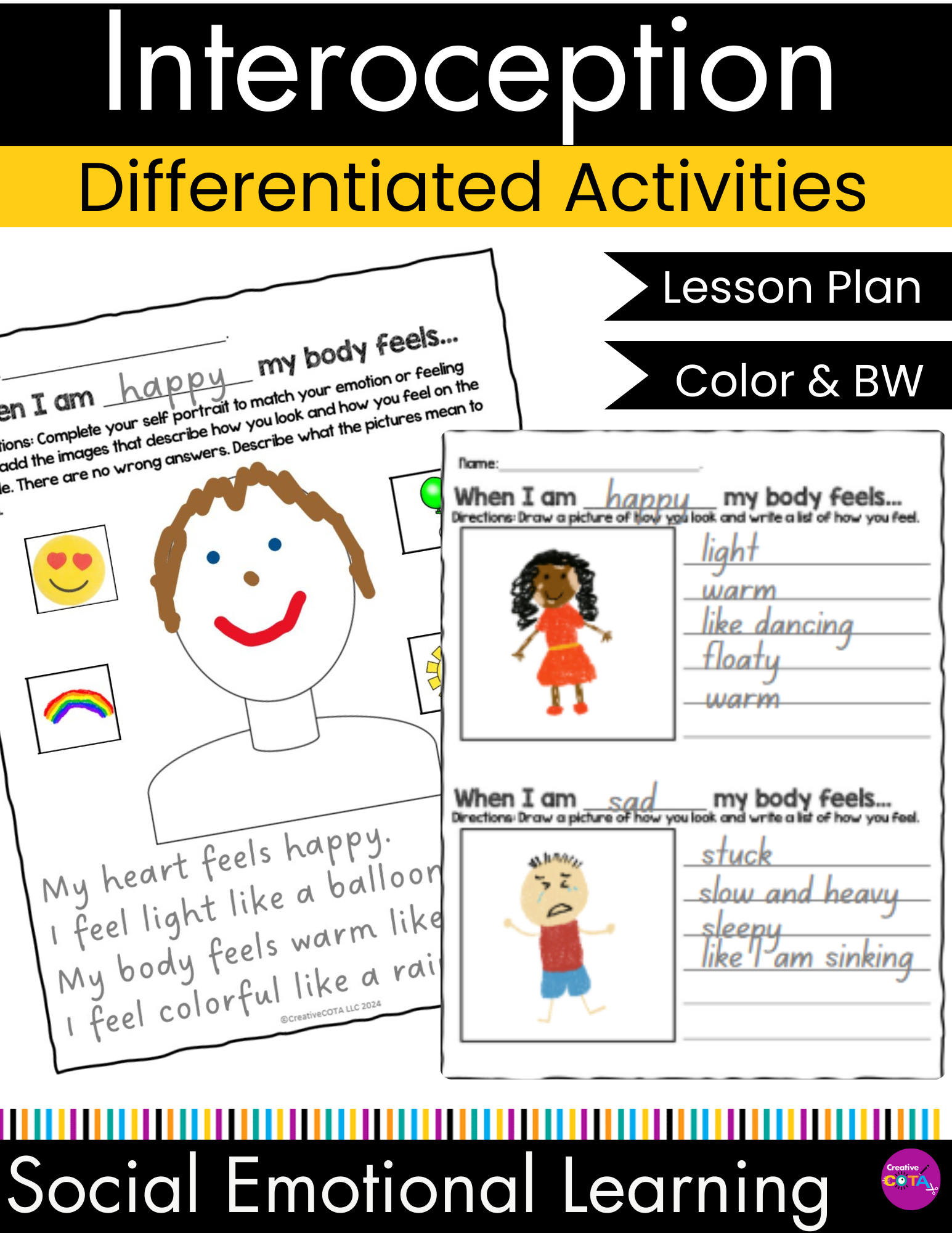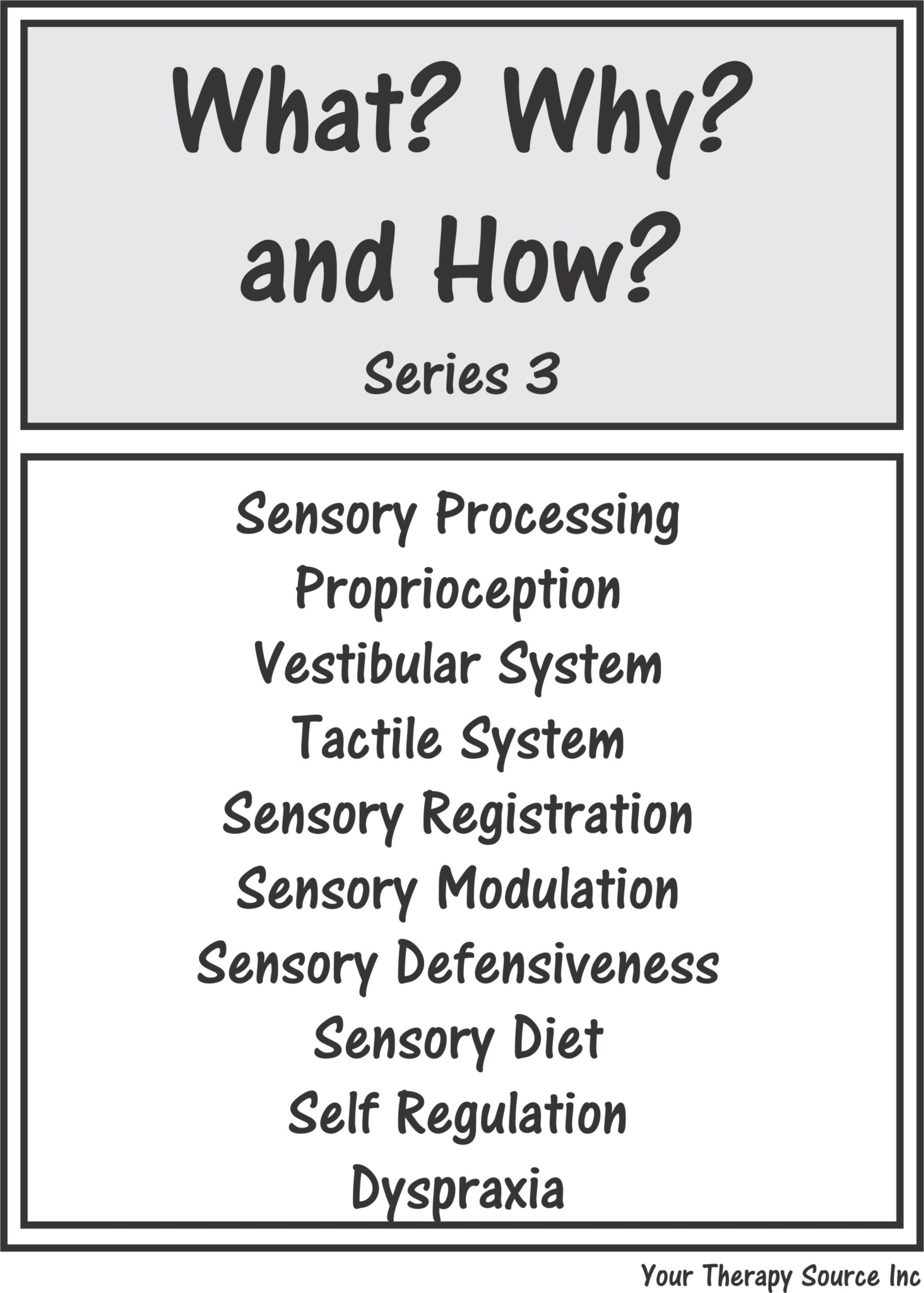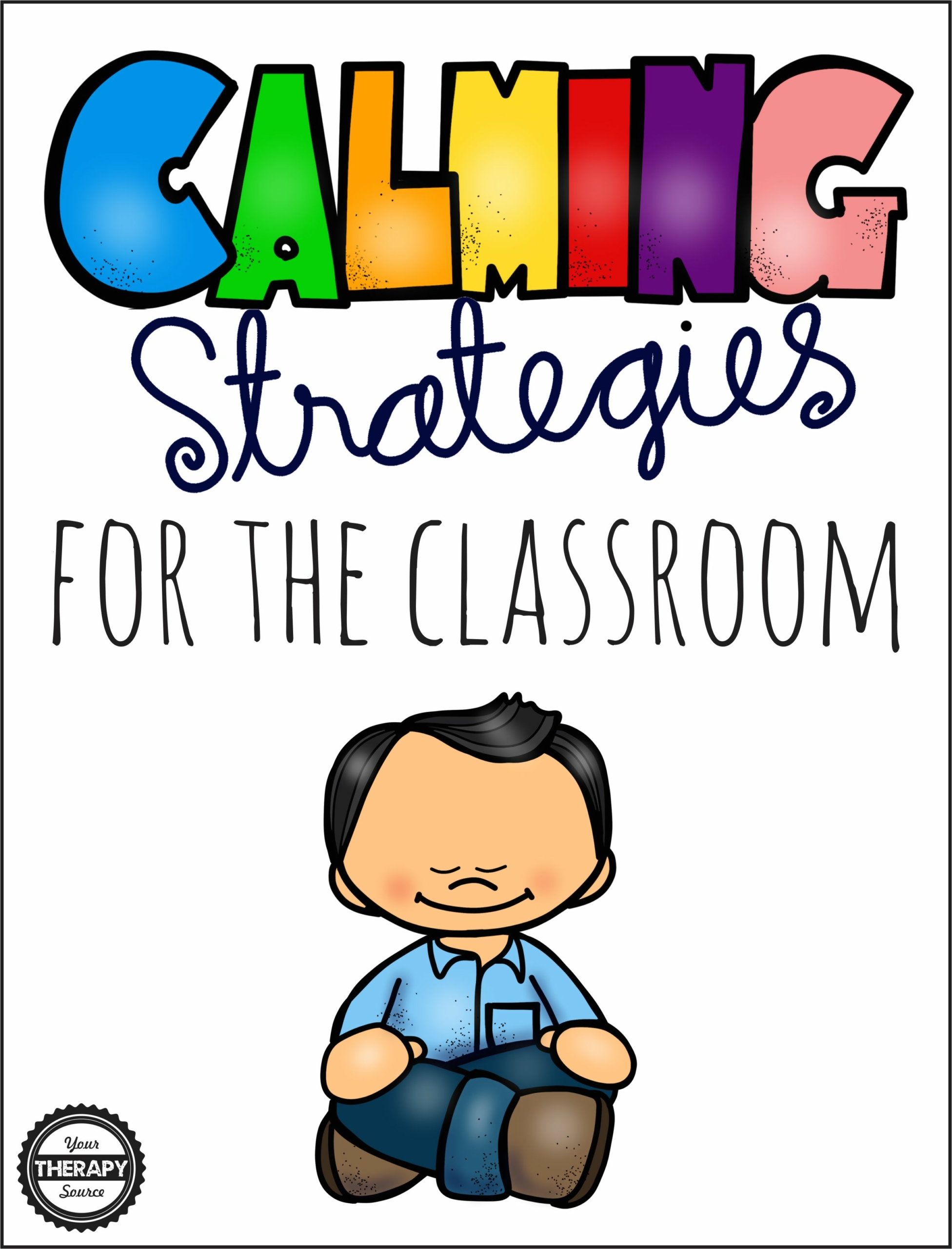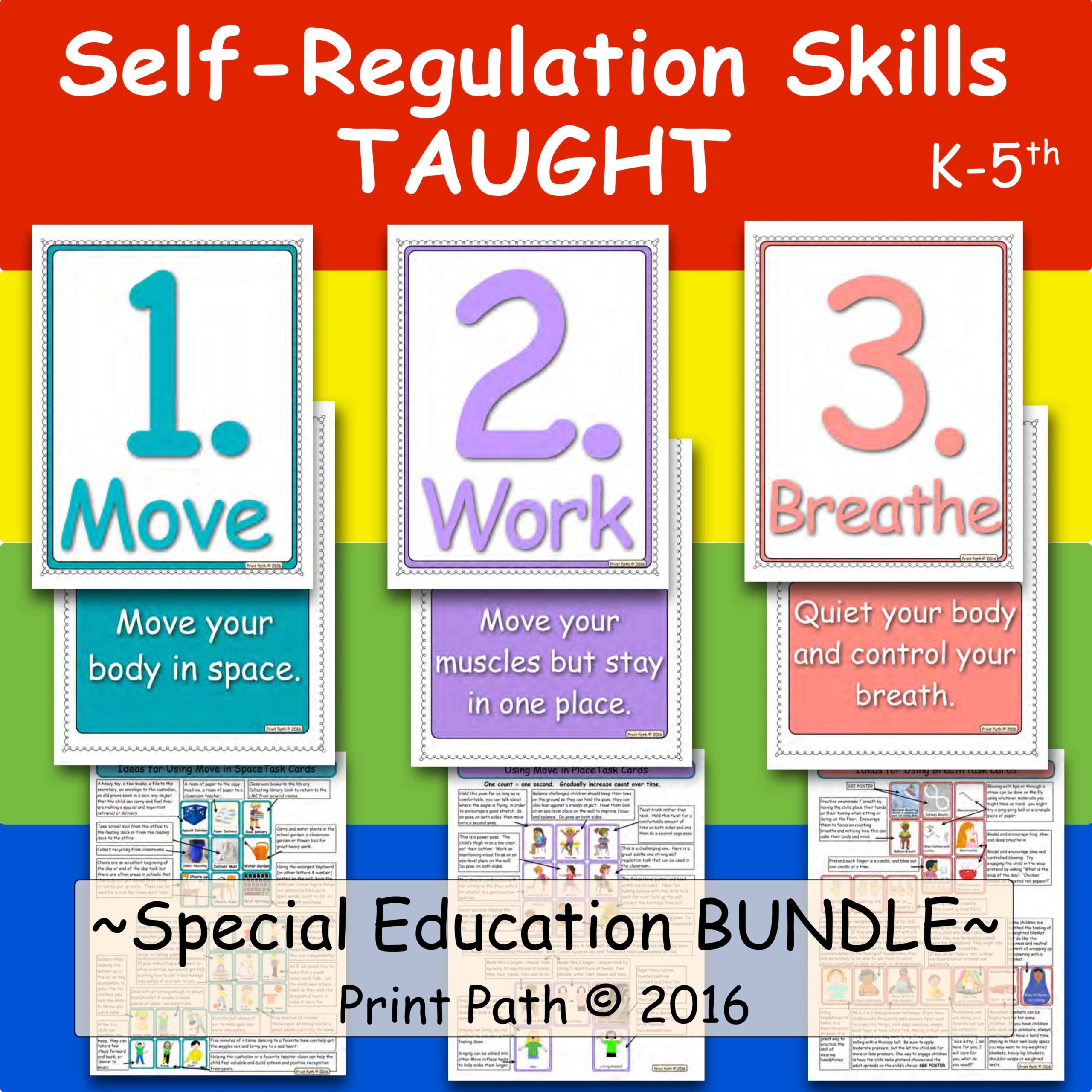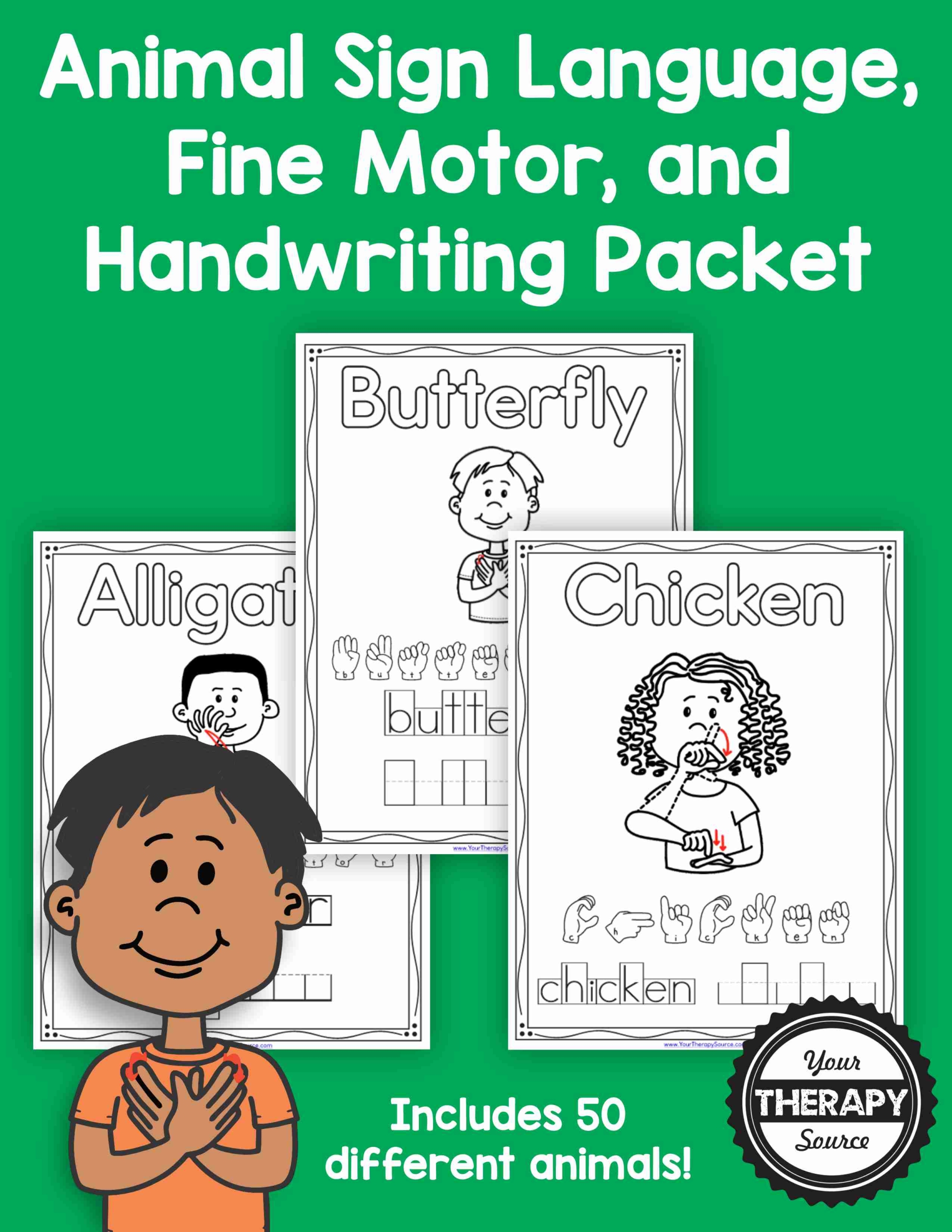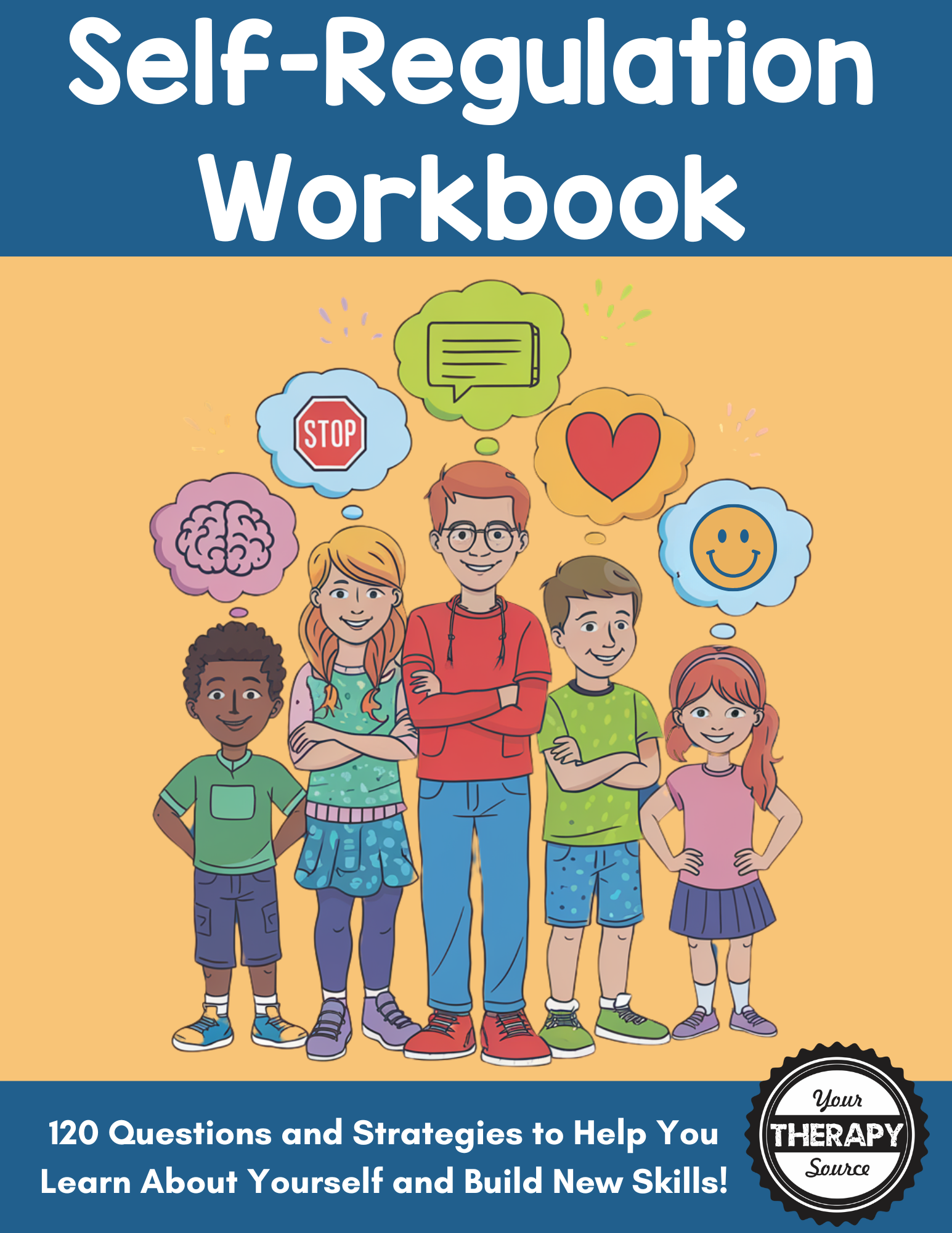Description
Understanding how our bodies feel when experiencing different emotions is a key skill for emotional regulation and self-awareness. This Occupational Therapy Interoception and Emotional Awareness PDF resource is specifically designed to help children, including those with autism and other sensory processing differences, identify and understand the physical sensations associated with emotions. Created with occupational therapy skills in mind, this resource provides valuable tools to foster emotional recognition, body awareness, and coping strategies. By teaching students about interoception (the ability to sense internal bodily sensations), this resource encourages students to recognize how emotions manifest physically, helping them manage their emotional responses in daily life.
The 23 page PDF will be available electronically immediately following payment.
When is a good time to use this Interoception and Emotional Awareness PDF resource?
- During emotional regulation lessons or social-emotional learning (SEL) sessions.
- As a part of occupational therapy interventions to enhance self-awareness and self-regulation.
- In small group activities or individual therapy sessions with students who need support with understanding emotions.
- For students with autism or sensory processing issues to help them process internal bodily sensations.
- Morning routines or transitions when children may experience heightened emotions or stress.
What is included in the Interoception and Emotional Awareness PDFPDF?
- A lesson plan for teaching interoception and emotional awareness.
- Differentiated worksheets to meet the diverse needs of students.
- Color and black-and-white images to help students visualize and identify bodily sensations. You can also use Google images and magazines to add more images.
- Lists of examples of how different emotions (happy, sad, frustrated, excited, etc.) might feel inside our bodies.
What skills are students working on with this resource?
- Body awareness and self-regulation skills.
- Recognizing internal bodily sensations linked to different emotions.
- Enhancing emotional intelligence and emotional vocabulary.
- Improving self-monitoring and coping strategies.
- Strengthening fine motor skills and writing through worksheets and drawing activities.
Key Features of the Interoception and Emotional Awareness PDF:
- Minimal prep required—simply print the worksheets and start teaching.
- Differentiated options for different learning styles and needs (including visual and tactile learners).
- Designed to support occupational therapy goals, especially for children with sensory processing issues or autism.
- Includes engaging illustrations to help students better connect with how their bodies feel during emotional experiences.

